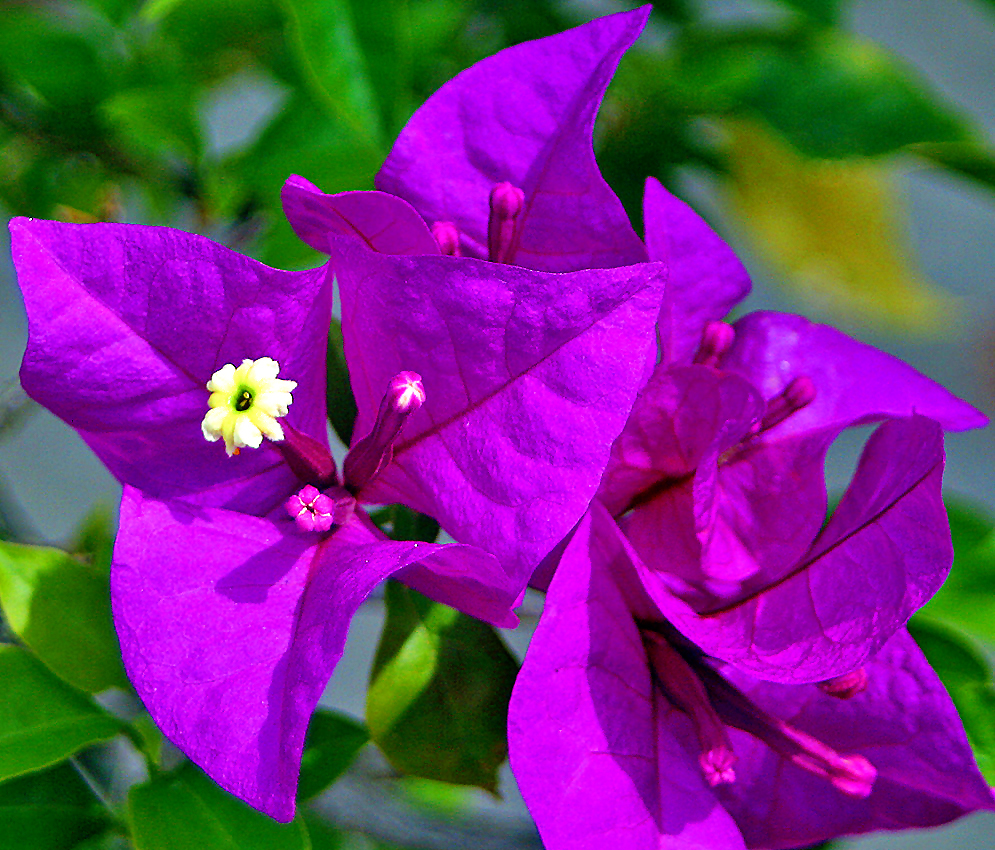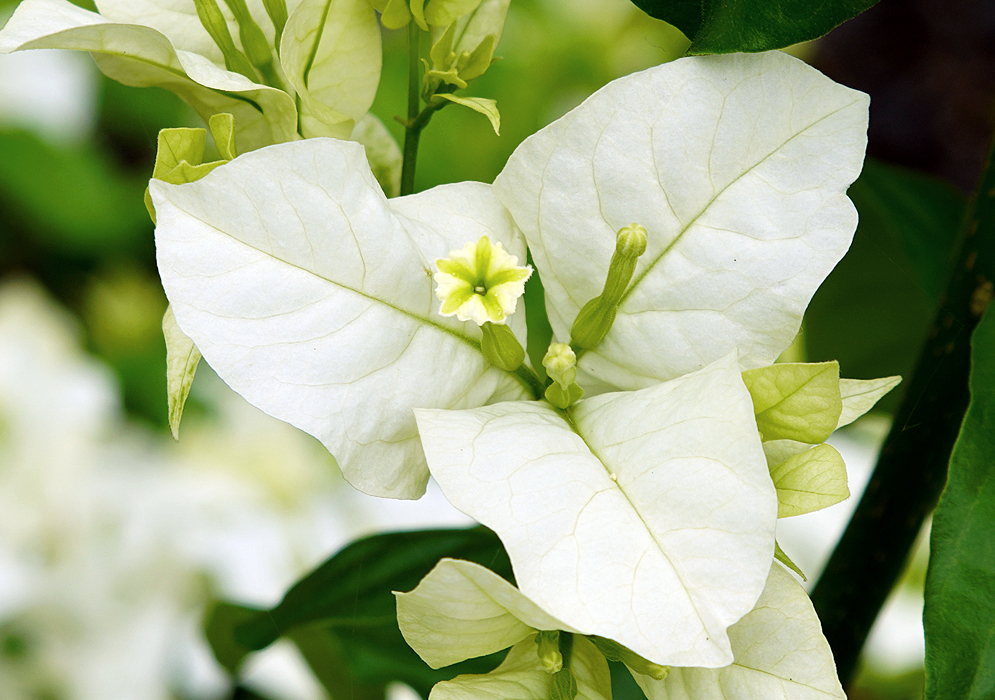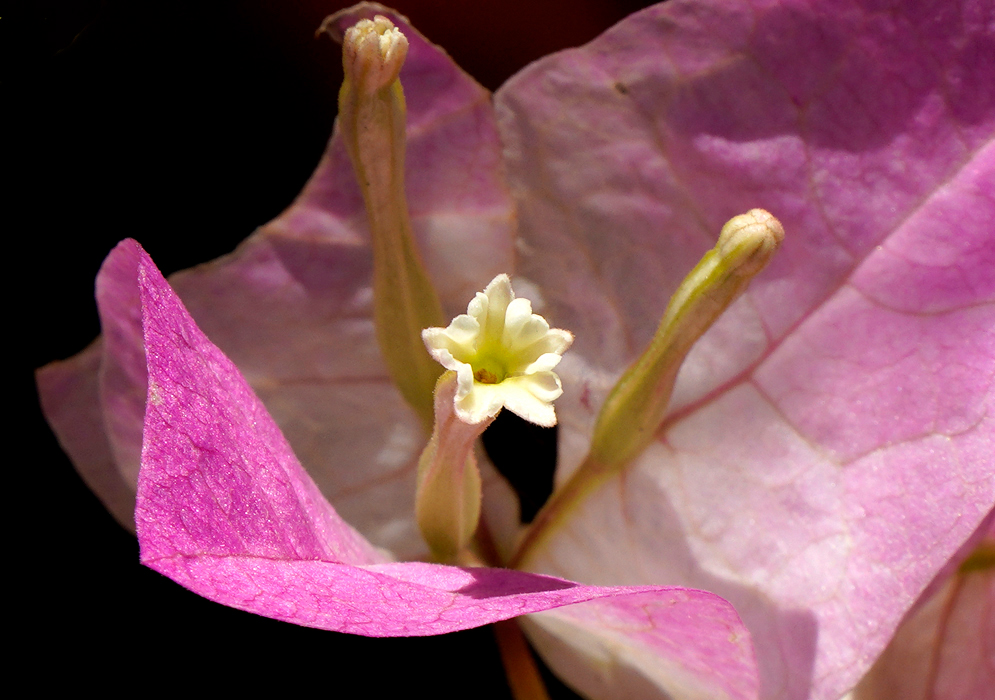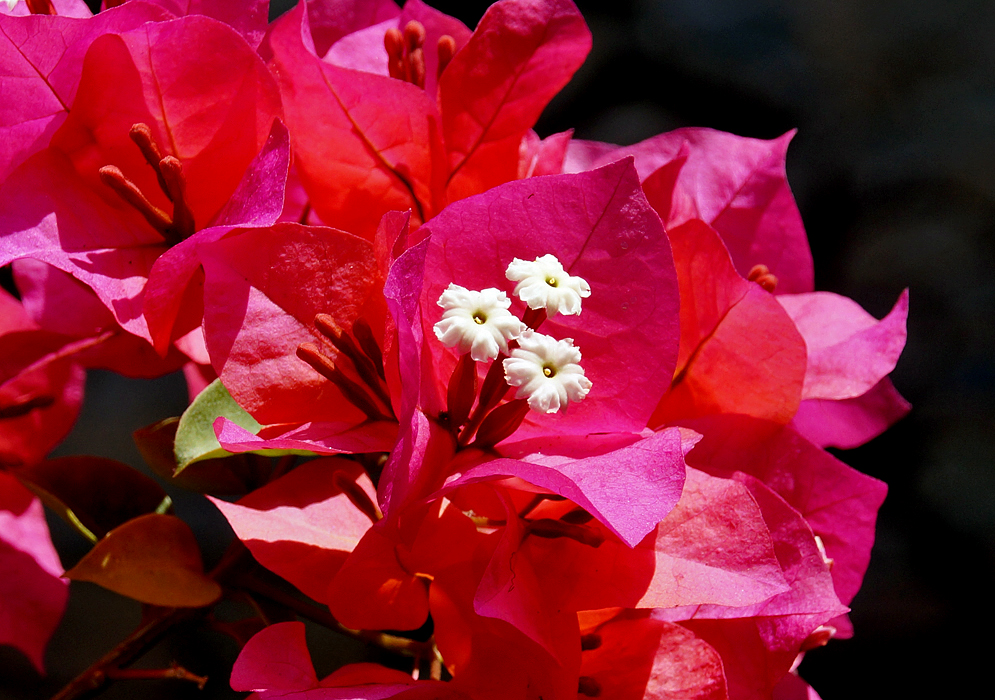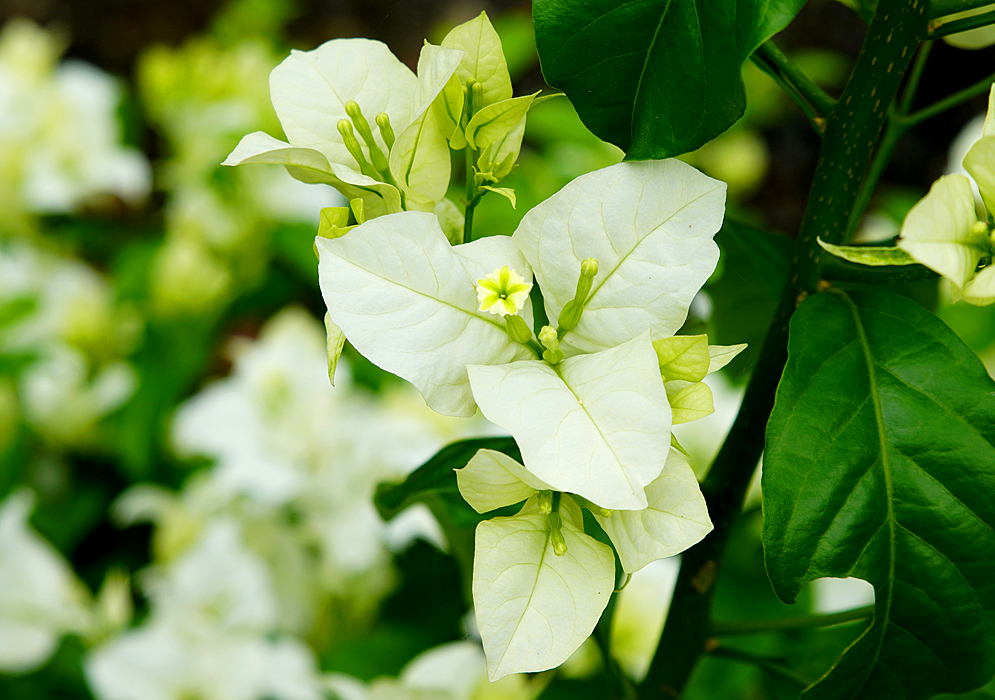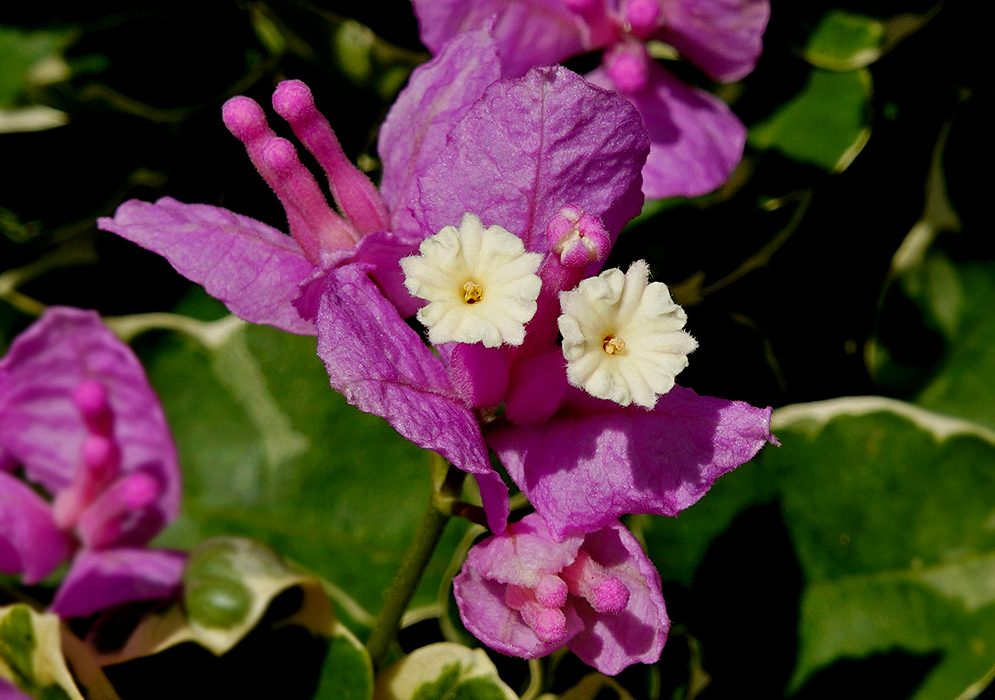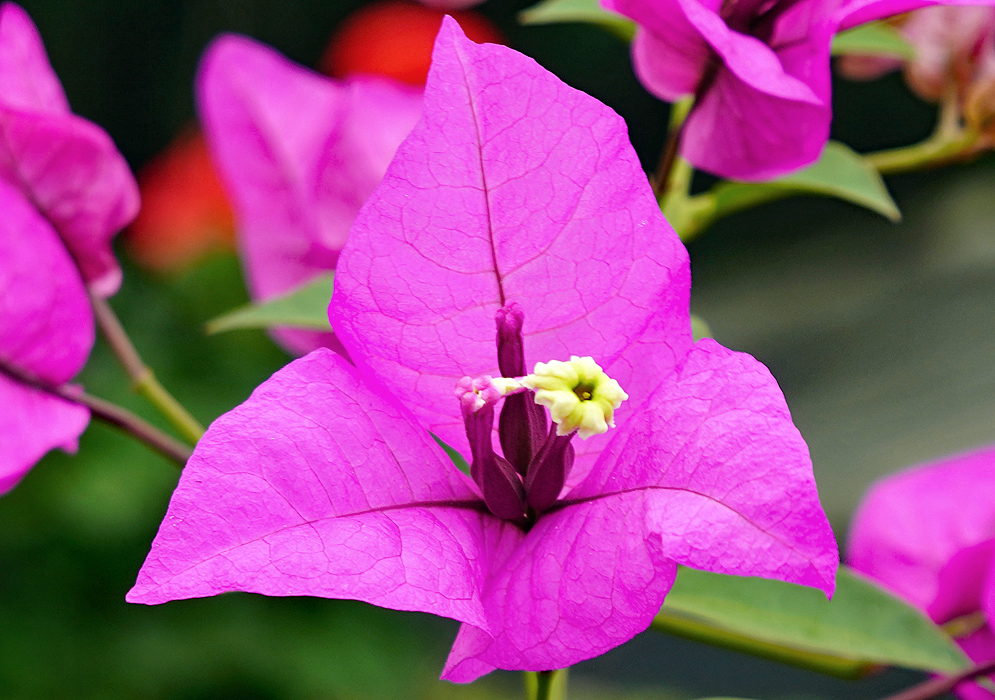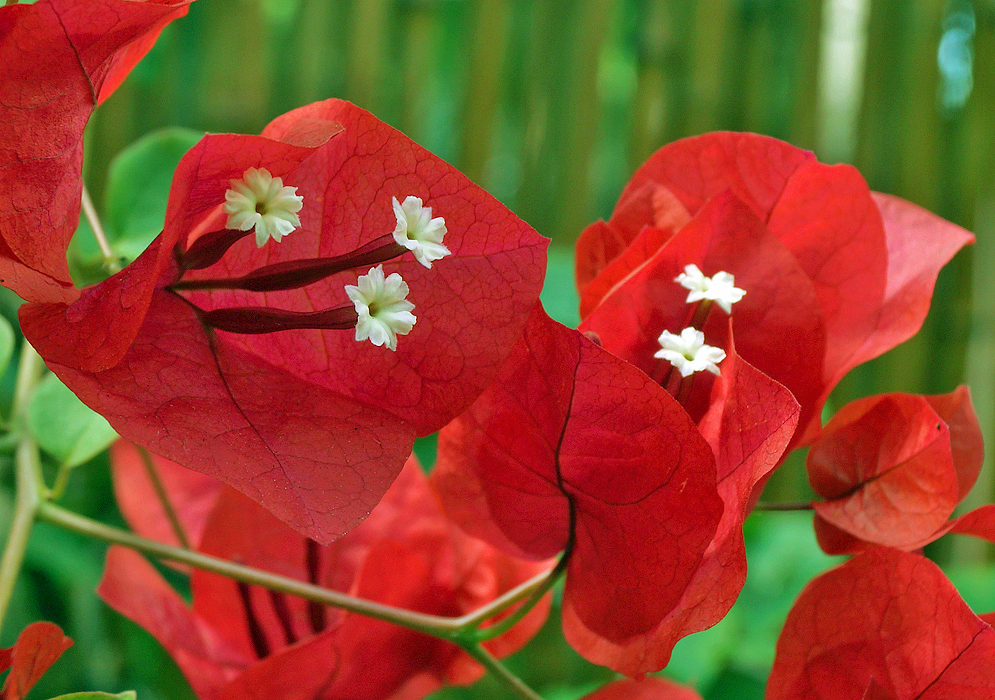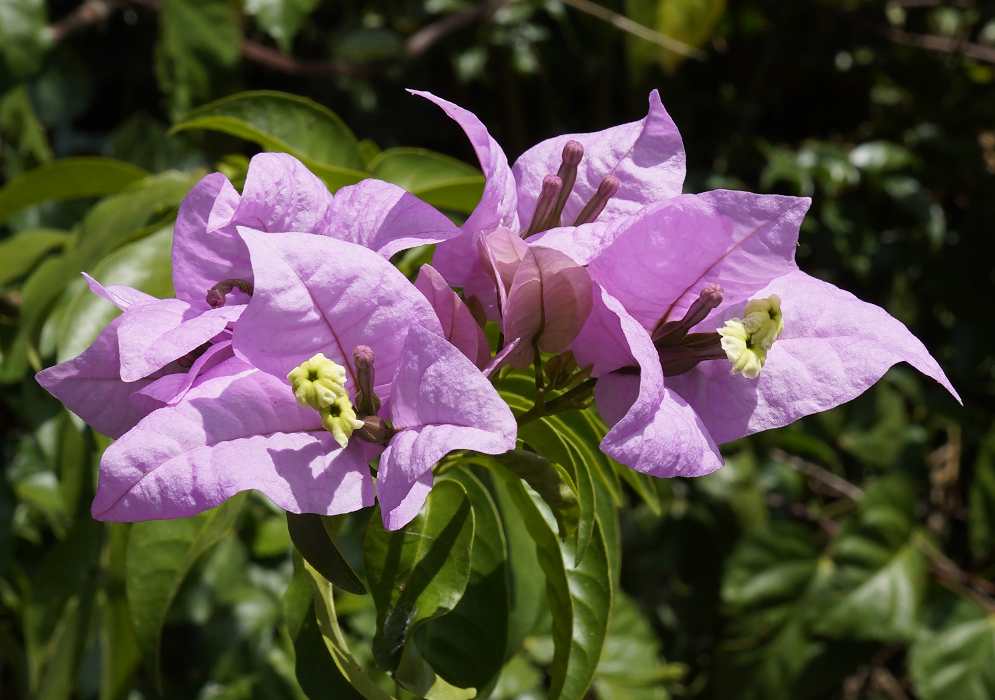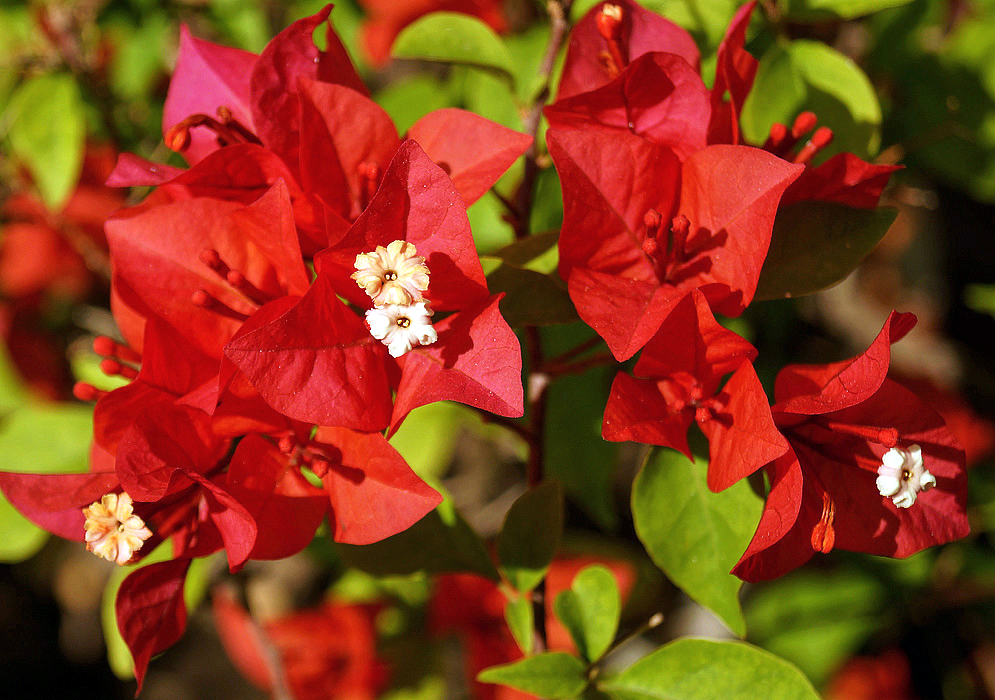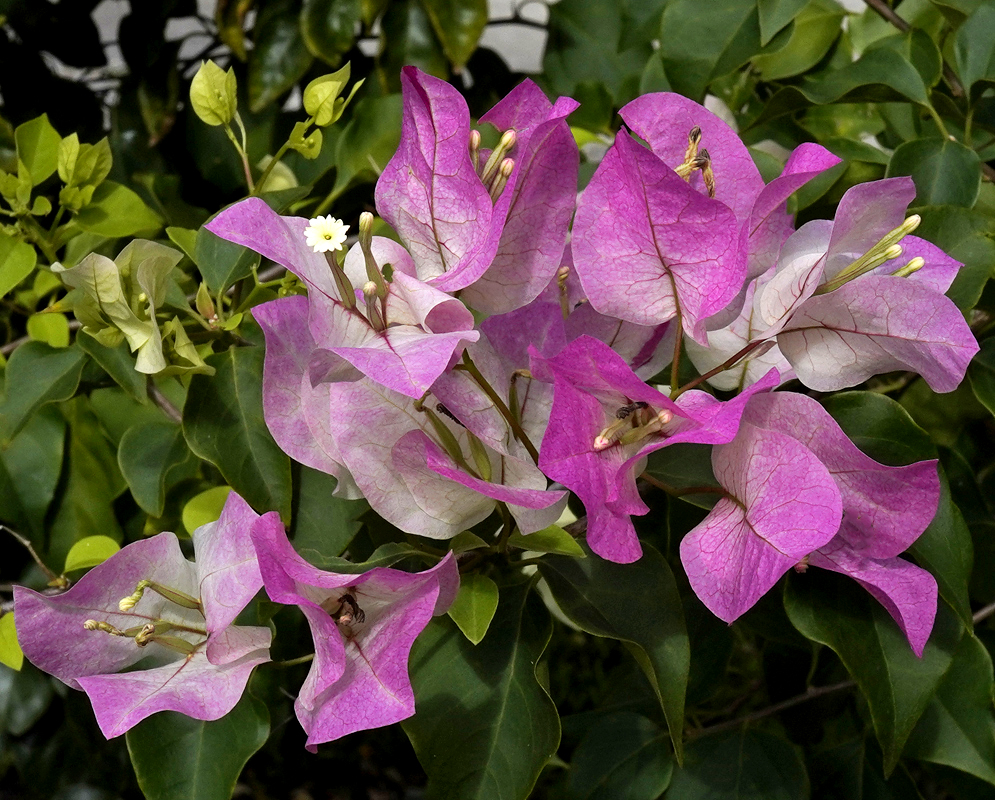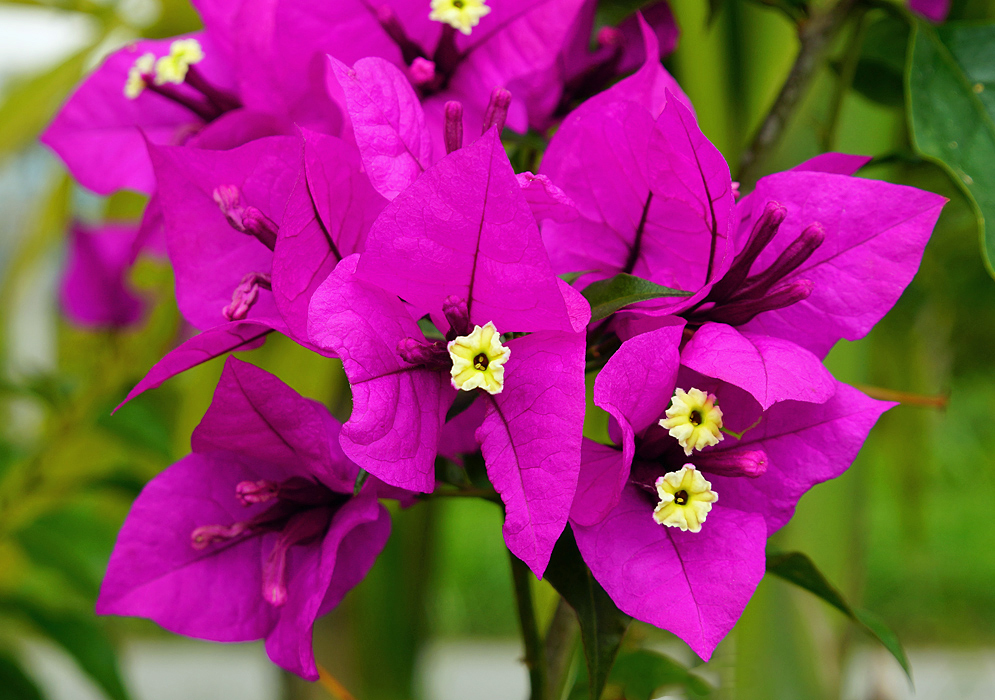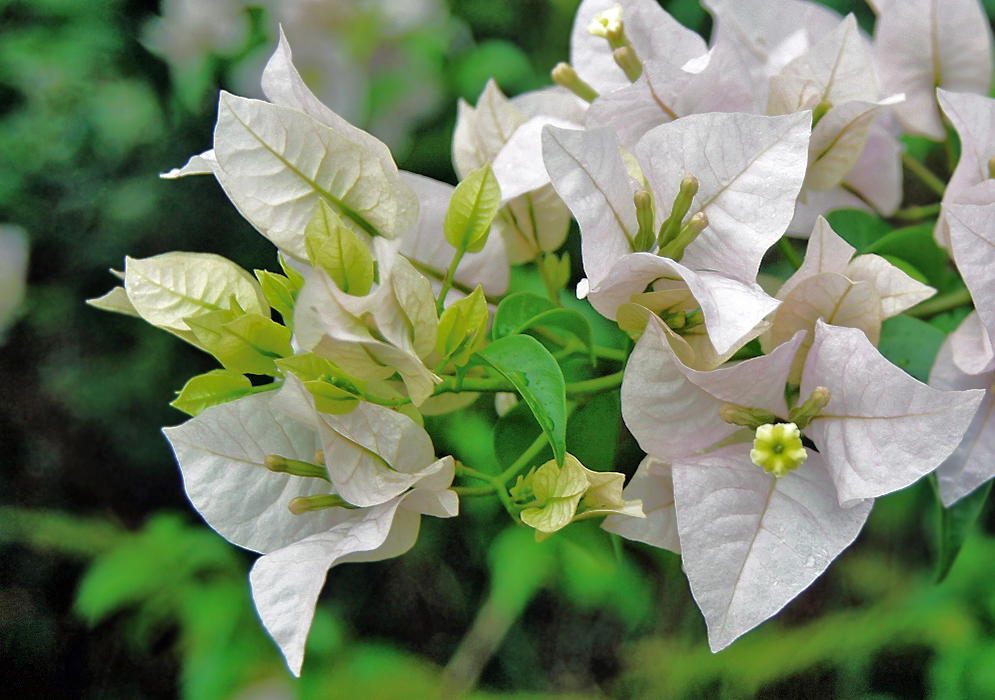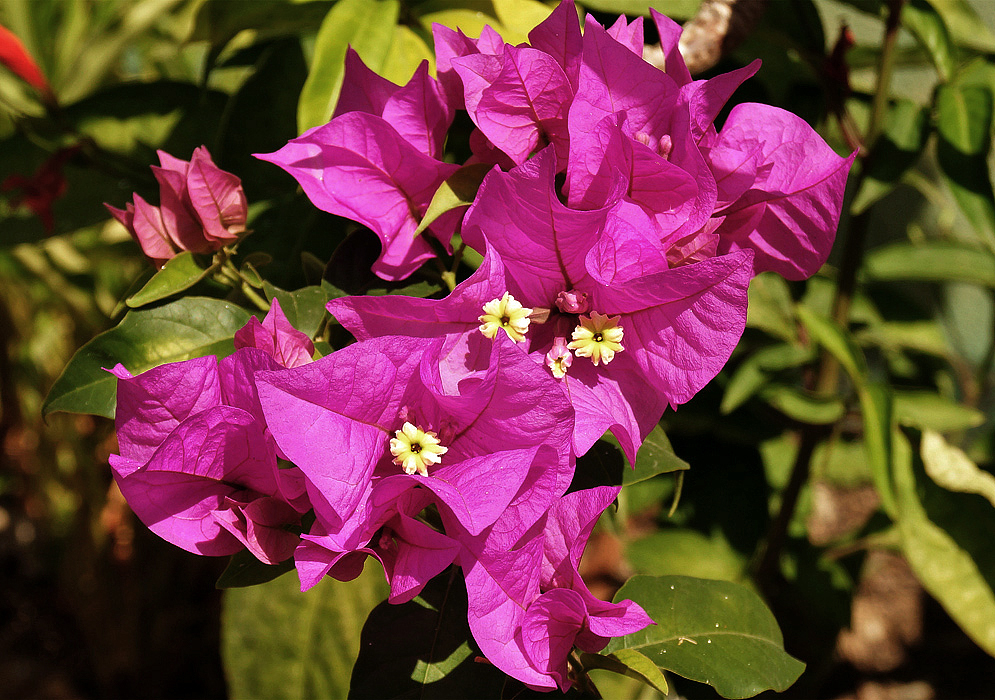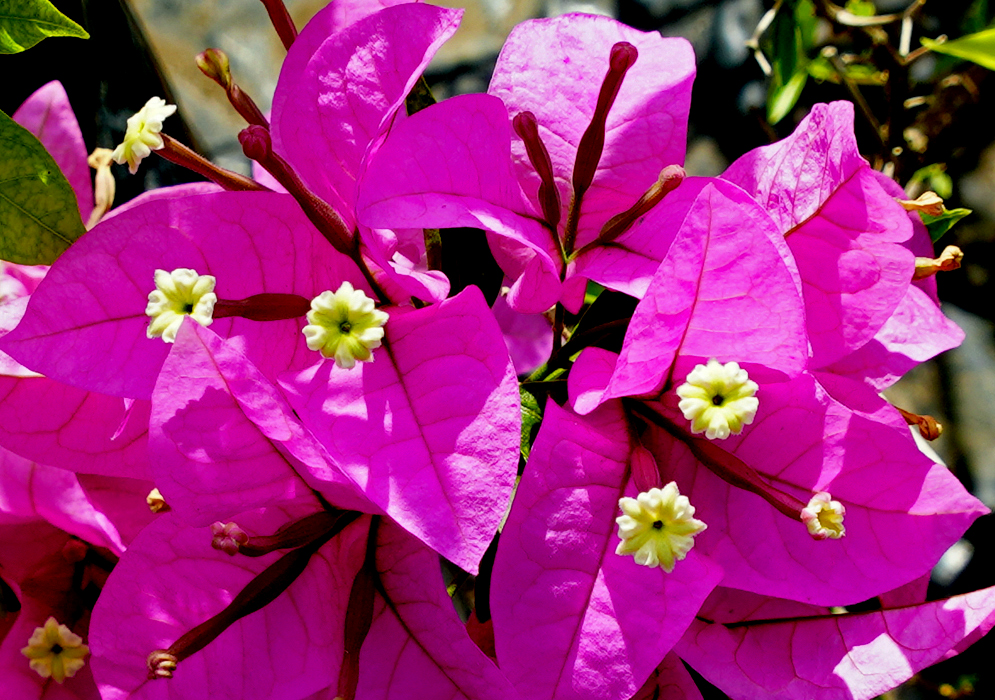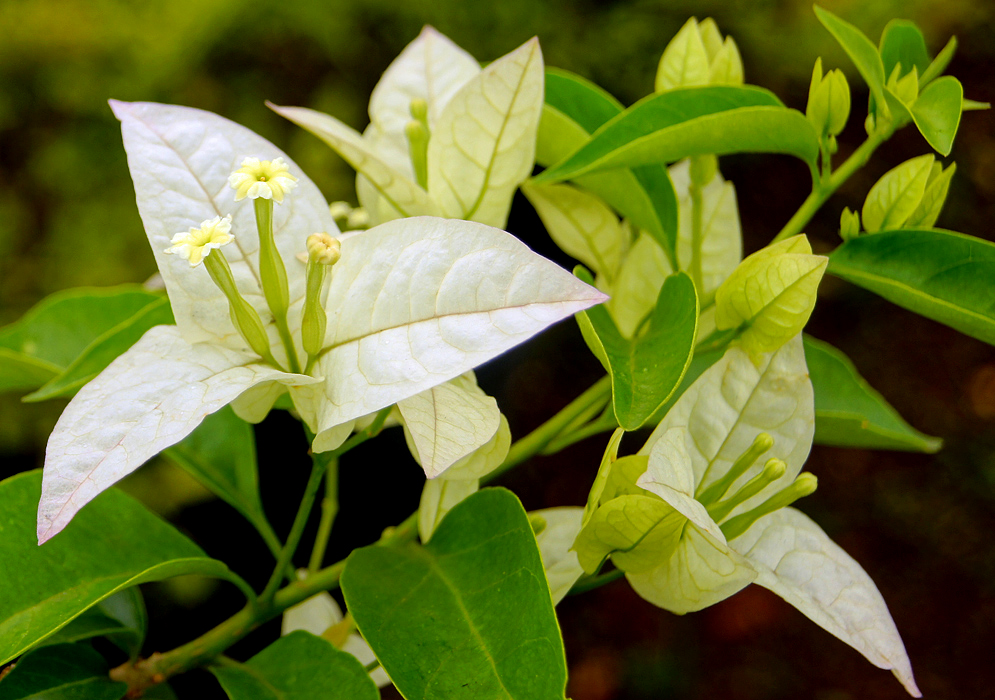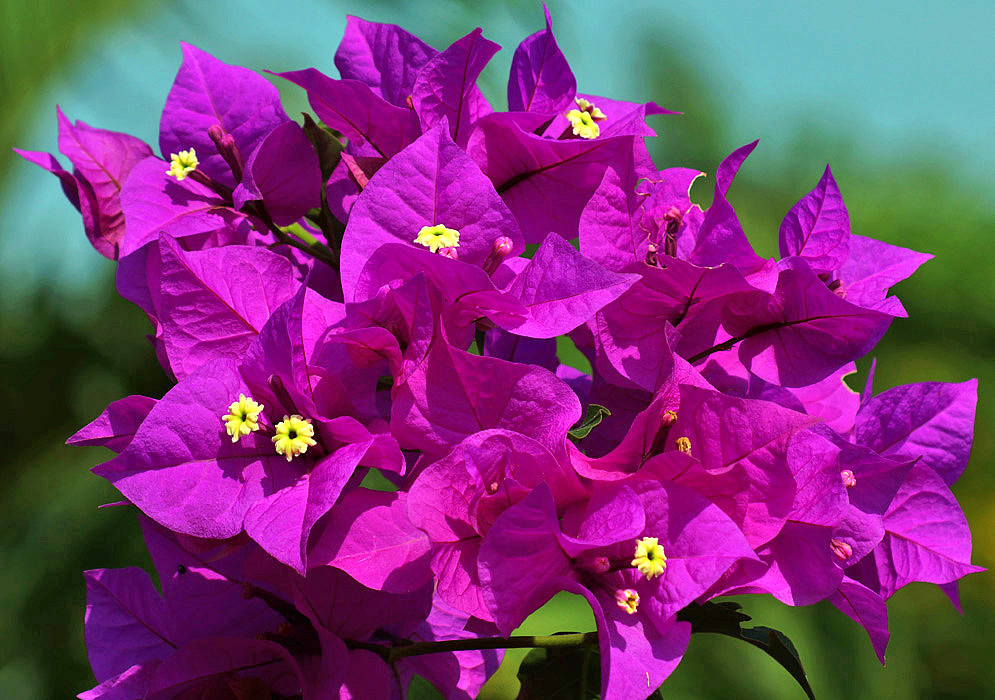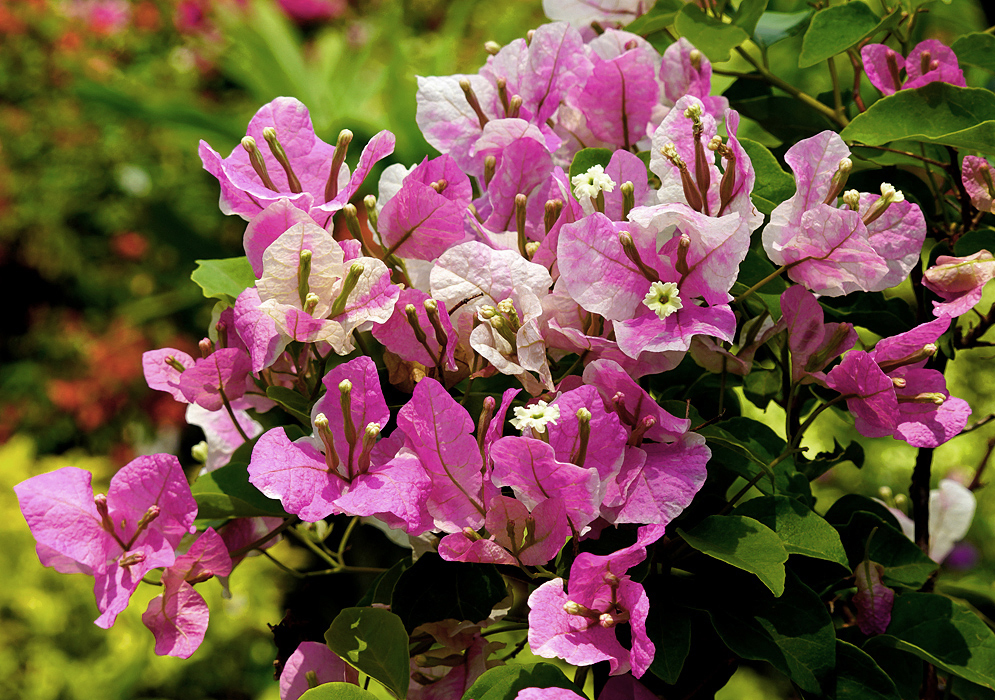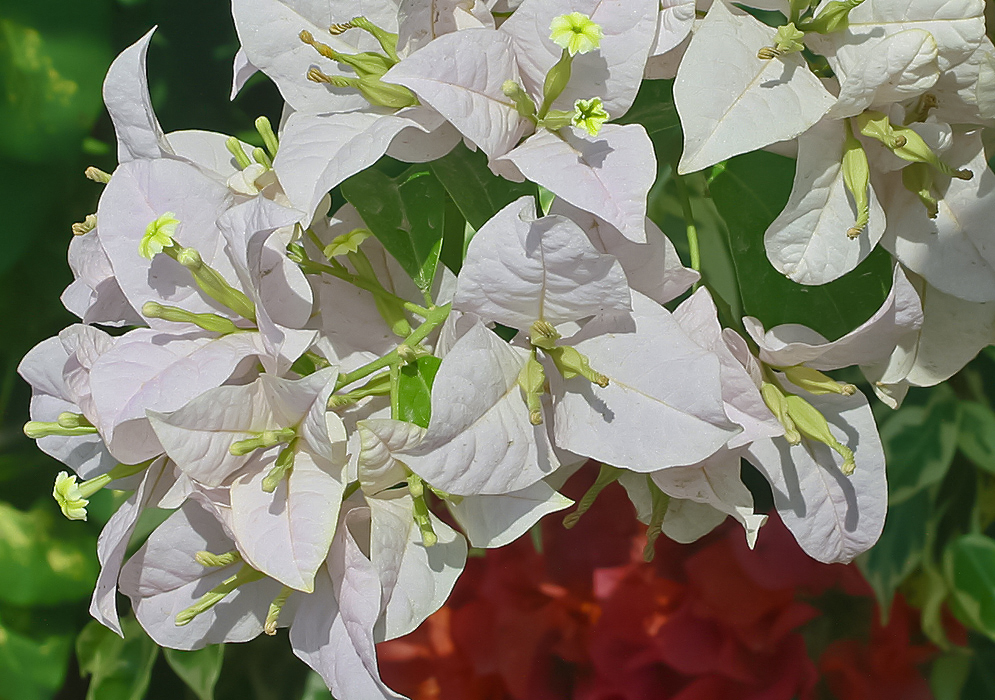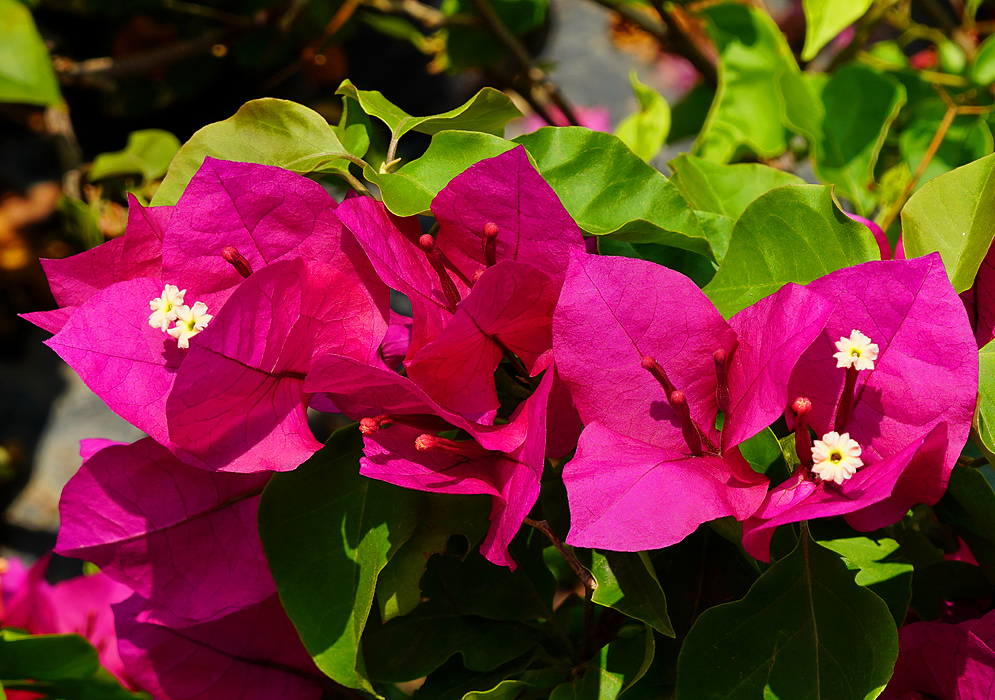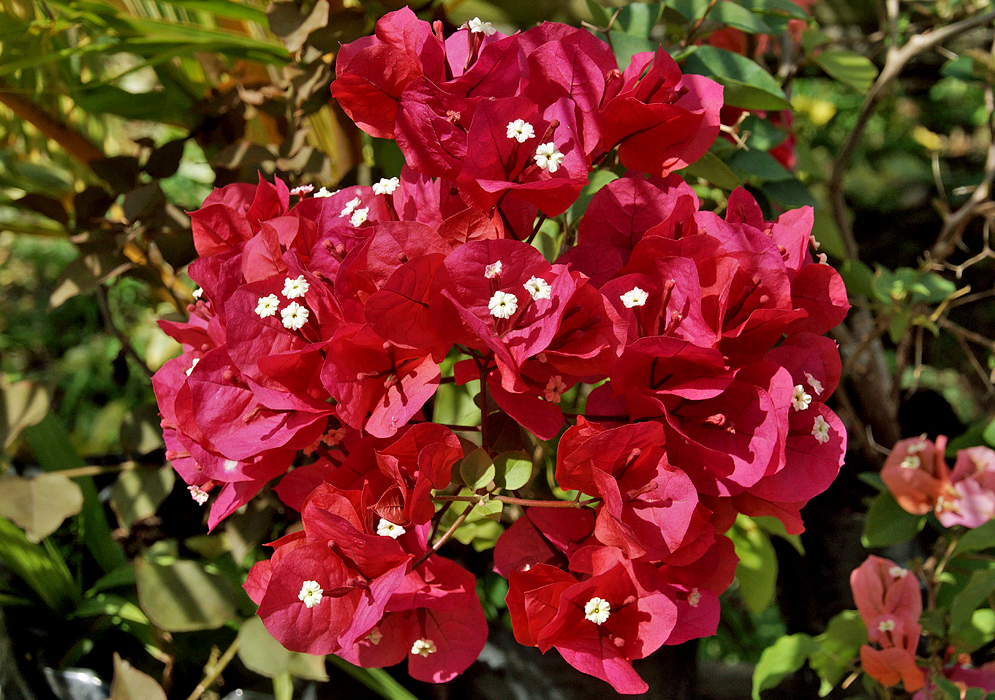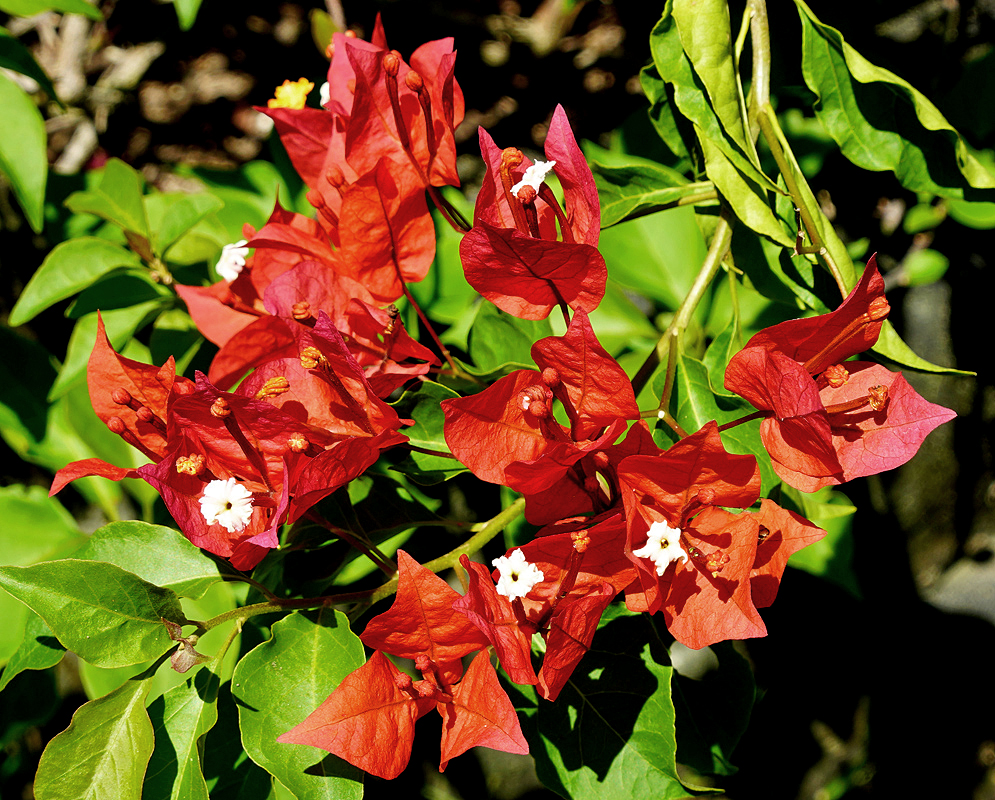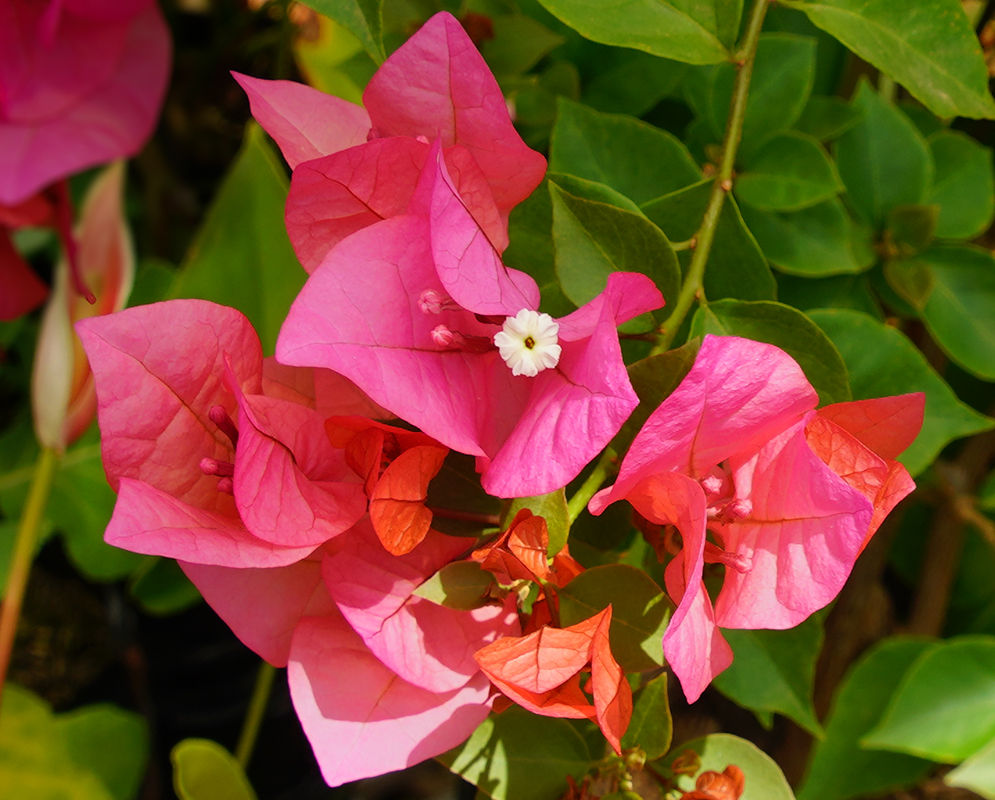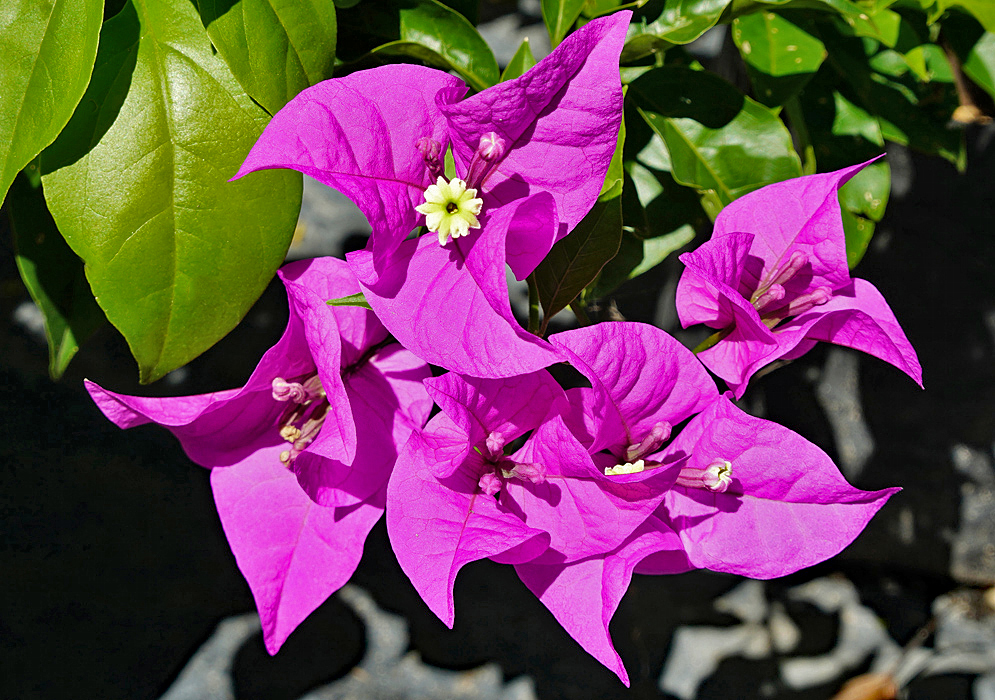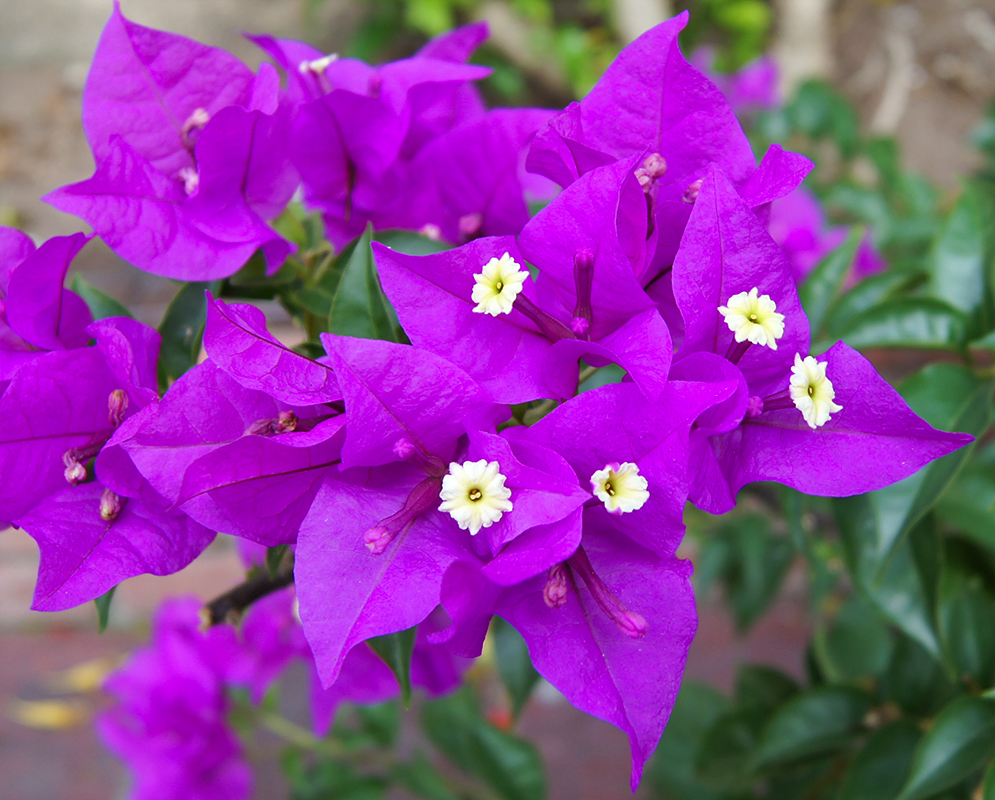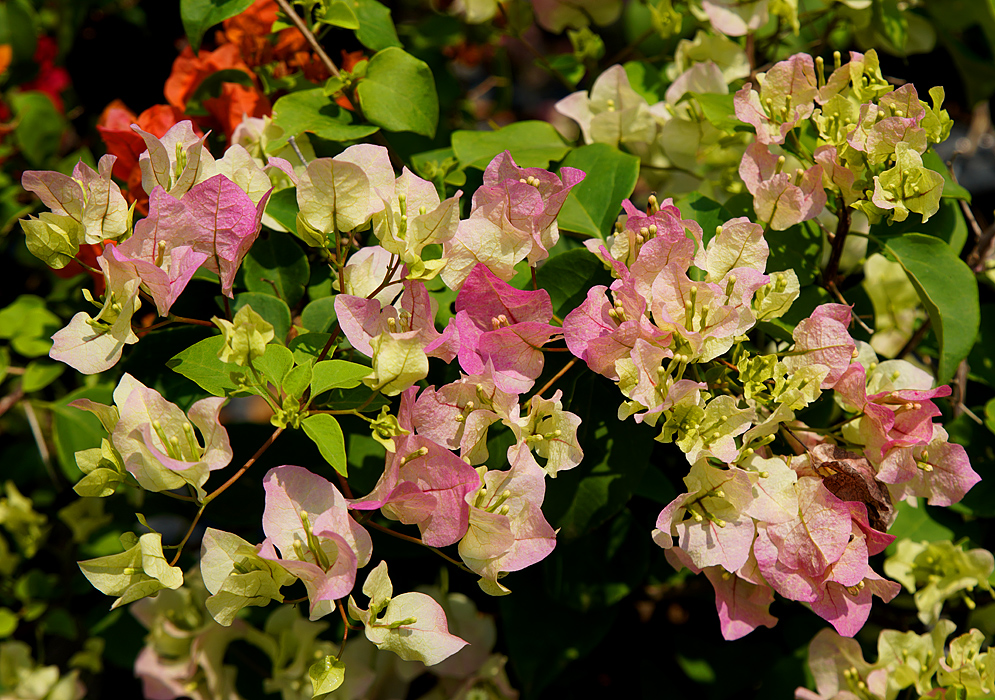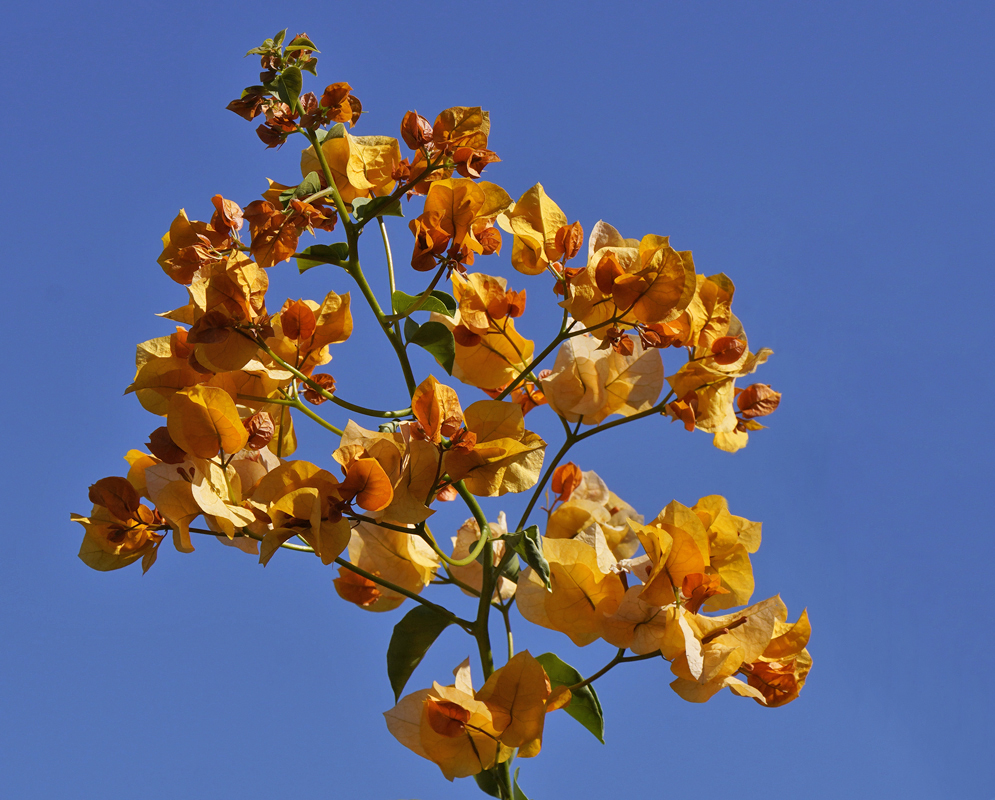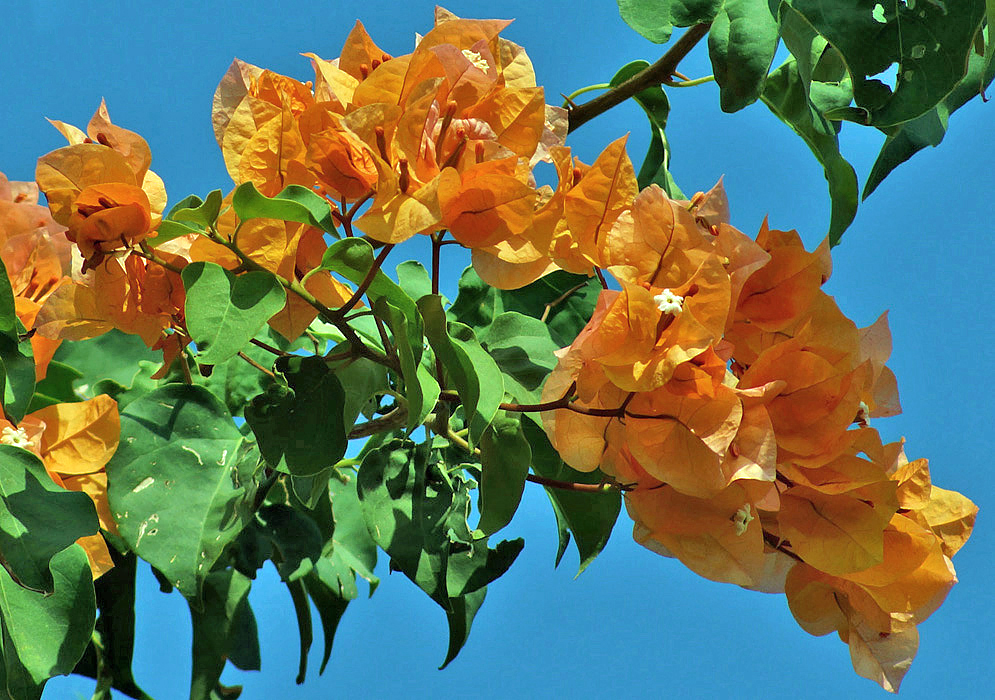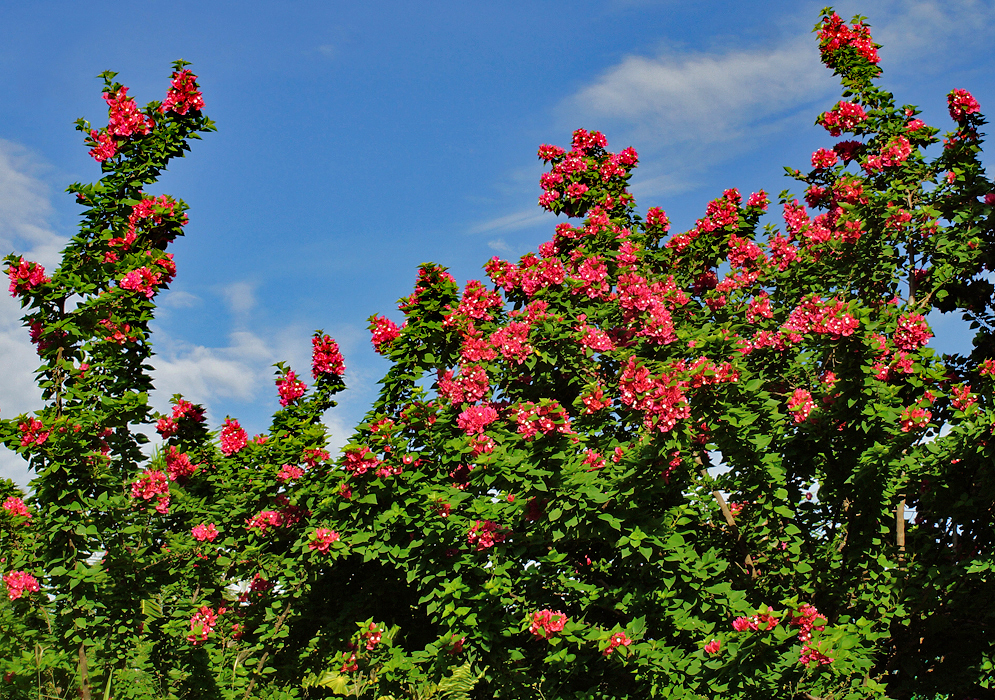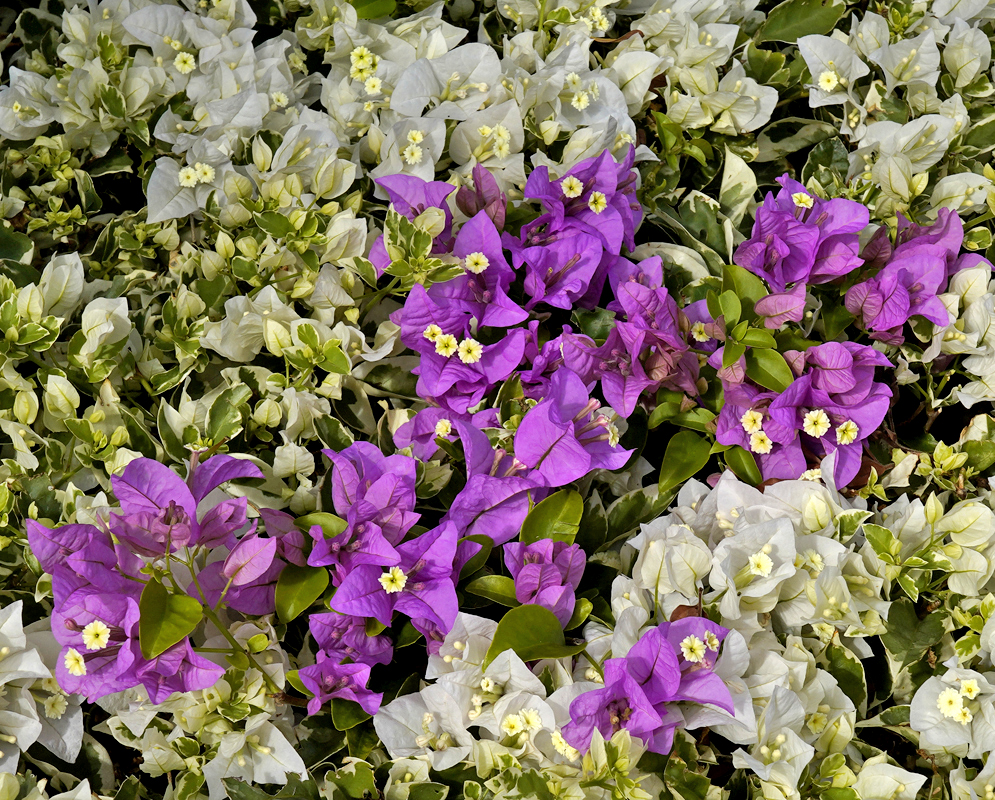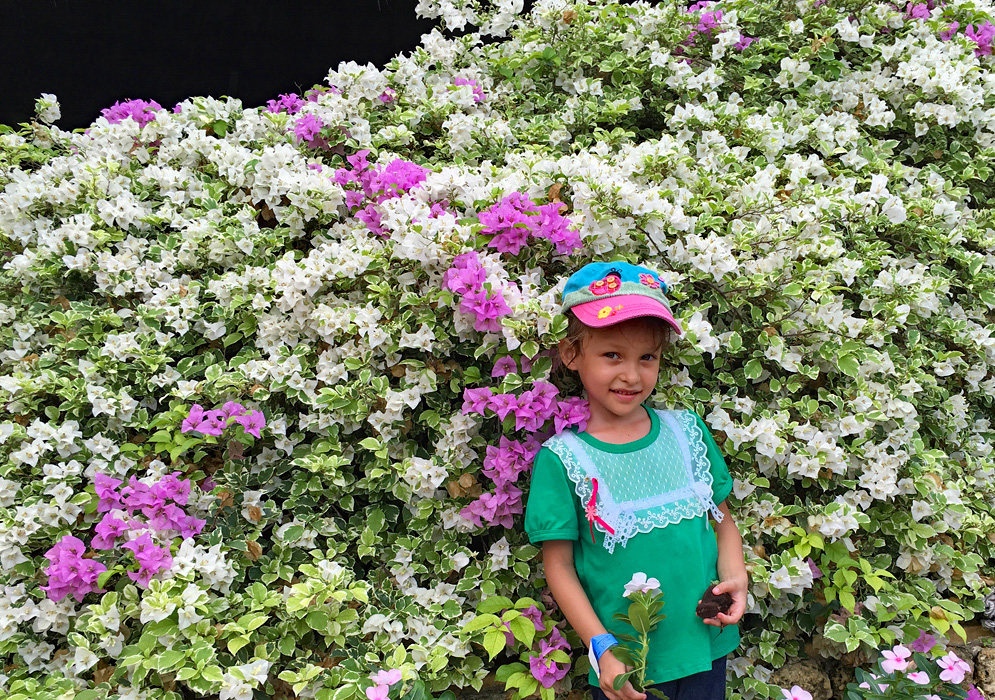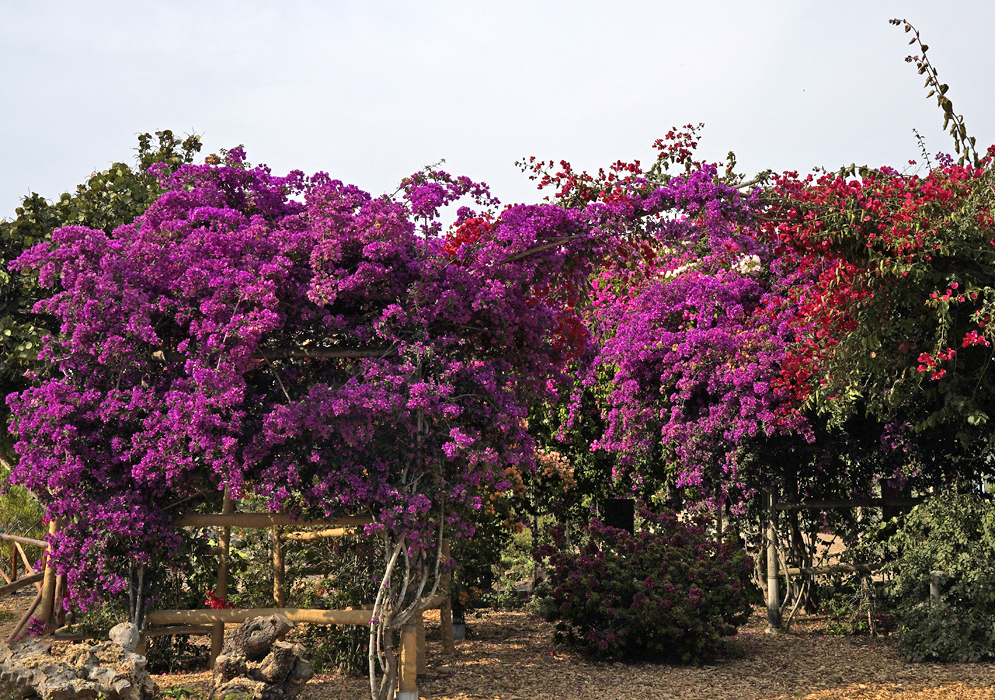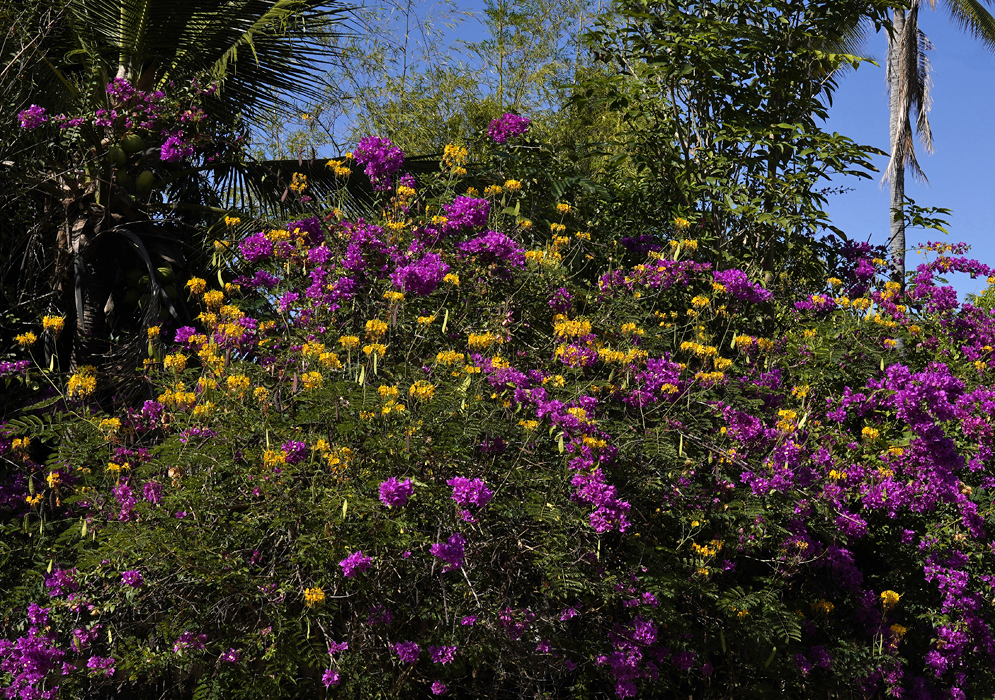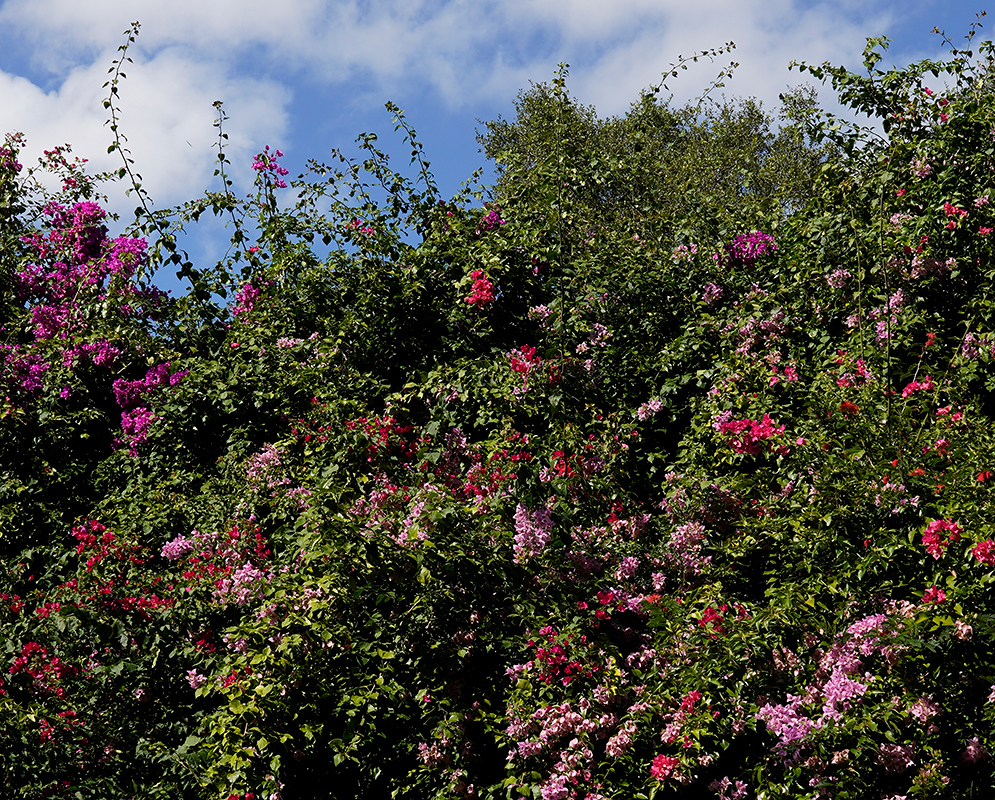This post has 11 Simple Fields-fields attached. Show fields.
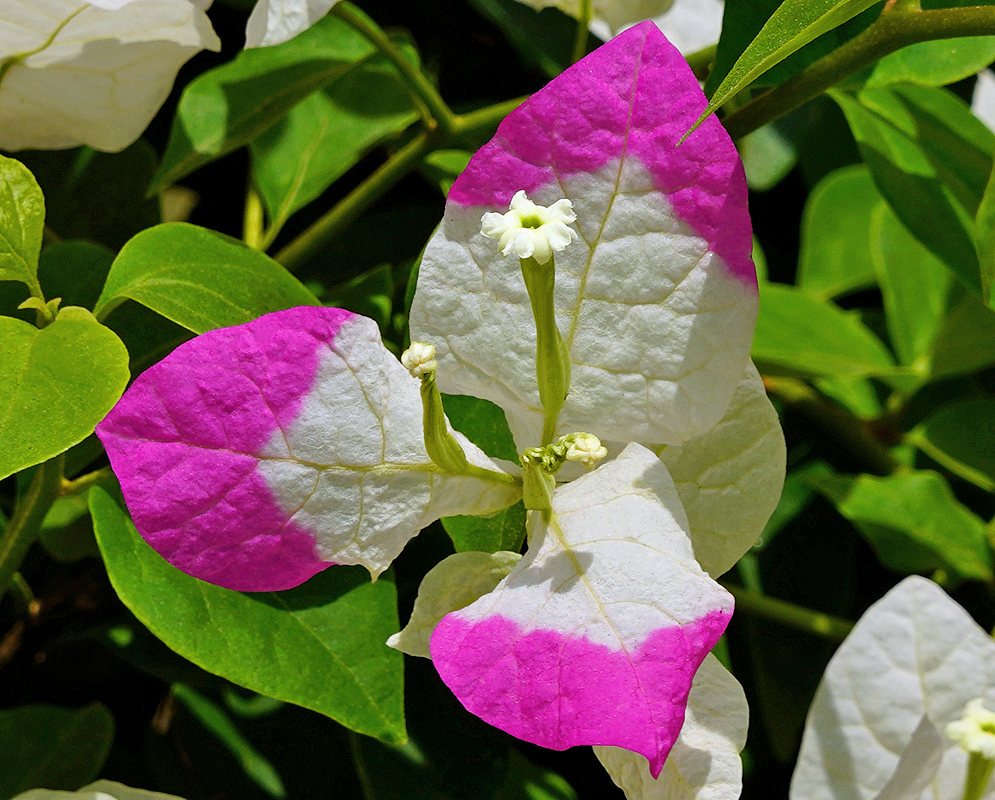
Originating from eastern South America, from Brazil to Peru and southern Argentina. Most garden Bougainvillea are some hybrid mixtures of Bougainvillea glabra, Bougainvillea spectabilis, and Bougainvillea brasiliens. It is a drought-tolerant, heat-loving ornamental plant, widely employed in warm-region gardens, patios, and public spaces, often grown on trellises, fences, pots, or walls to create colorful and lush displays. Very attractive when trained as a tree and a vigorous grower that can tolerate light frost. Possibly one of the most popular colorful ornamental in the tropics and subtropics. Bougainvillea has unique bracts, which are modified leaves that surround its inconspicuous, trumpet-shaped white or yellow true flowers, providing the vibrant color displays that the plant is known for. These bracts come in a variety of colors including red, pink, white, purple, and orange. Medically, Bougainvillea has been acknowledged for its anti-inflammatory properties which can aid in alleviating joint pains and other inflammation-induced conditions. Additionally, the plant's flowers have been used in Mexican traditional medicine for the treatment of coughs and respiratory problems. In a more commercial aspect, the purified form of betanin from Bougainvillea may serve as a food colorant and antioxidant additive in the meat industry. Photographed in Colombia, Ecuador, Panama, and Peru.


